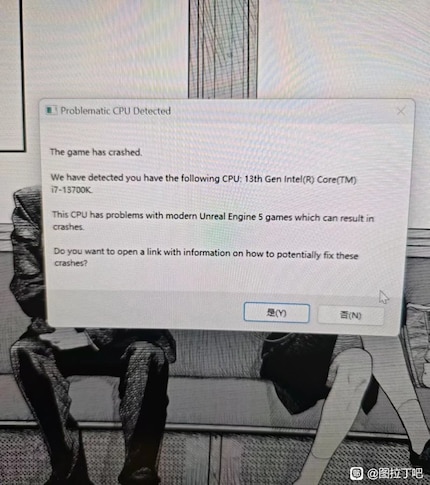
News + Trends
AMD postpones Ryzen 9000 launch due to quality problems
by Martin Jud

After over a year and a half of reports around unstable 13th and 14th generation CPUs, Intel has finally responded. A patch has been announced. However, this’ll only help processors that are still functioning correctly – if at all.
First reports of problems with Intel CPUs apparently surfaced online as early as December 2022, with the frequency steadily increasing. Due to numerous user complaints about desktop PC crashing when playing games or running CPU-intensive programs, Intel had to react. The company announced an investigation in April 2024.
Last week, after months of silence, Intel finally took a position. The company reports that after extensive analysis, it has determined that «elevated operating voltage is causing instability issues in some 13th/14th Gen desktop processors». The analysis also showed that the problem was due to a microcode algorithm with incorrect processor requirements.
At the same time, Intel announced a microcode patch that «addresses the root cause of exposure to elevated voltages». Partners can expect this patch in mid-August after complete validation. UEFI updates for end customers are expected to follow soon after. Anyone currently experiencing instability problems should contact Intel customer support, even if a CPU replacement has already been rejected once.
Intel’s brief statement appears to confirm the company has found the cause. On closer inspection, however, it raises more questions than answers. There was no direct mention of fixing the bug with the patch. Only the «root cause». The exact processors involved also weren’t specified.

Various news platforms have contacted the company. Responses, received by The Verge for example, indicate that the problem is far from solved. What’s particularly newsworthy, as Intel specified to the news platform, is that every 13th and 14th generation desktop processor with at least 65 watts of power consumption could be affected. Weeks ago, the community on Reddit and the like speculated that it’d only affect the most powerful i9 series. But no, Core i5 and i7 are also included.
Furthermore, according to unnamed sources at Tom’s Hardware, any deterioration in processor performance is permanent. Increased voltage causes the CPU to work outside safe operating limits, leading to «an irreversible deterioration of the affected processors».
The online magazine continues: «We’re told that the microcode patch will not repair processors already experiencing crashes, but it is expected to prevent issues on processors that aren’t currently impacted by the issue. For now, it is unclear if CPUs exposed to excessive voltage have suffered from invisible degradation or damage that hasn’t resulted in crashes yet but could lead to errors or crashes in the future.»
In the worst case, this’d mean even a CPU that appears to be running correctly could be damaged. In other words, it could ultimately affect huge swaths of processors. However, Intel doesn’t think this is likely and has already reassured that the patch will be an effective preventative solution for processors already in operation. So far, Intel hasn’t contradicted the magazine’s claims that faulty CPUs can no longer be saved.
What isn’t true, apparently, is the assumption that the instability could be related to an oxidation problem during production. In an interview with Tom’s Hardware, Intel says that such a manufacturing problem did indeed occur with some early 13th Gen CPUs, but that it had already been fixed in 2023. The company claims it isn’t related to the instability problem at hand.
Respectively, this is a second problem that should lead to processor replacement, just like the current one. Provided there’s still a warranty in the event of accidental damage – or Intel decides to be generous and extend it.
In its statement, Intel emphasises its confidence that owners of affected CPUs need not worry about invisible degradation if no problems have occurred yet. However, the company also claims to have discovered the root cause of the voltage problem. It’s also looking for further problems.
The majority of customers are probably less confident than Intel. And they aren’t the only ones keeping Intel on its toes with complaints. By now, even game developers have started including warnings in games for players using a 13th or 14th generation Intel CPU. For example, a warning appeared for X-user 9550pro after a crash in Path of Titans, indicating problems with his i7-13700K CPU in connection with Unreal Engine 5.

If there’s still more to come, Intel’s already tarnished image could be scarred. The company’s fighting tooth and nail against this. However, it’s not considering a CPU recall or even a sales stop. And it hasn’t yet provided any information on a possible warranty extension. However, Intel recommends customers with an affected CPU that isn’t yet defective keep the UEFI (formerly BIOS) up to date and use the default Intel settings.
Anyone currently looking to buy a laptop with a 13th or 14th generation Intel processor can probably do so without hesitation. According to Intel, those aren’t affected, which is related to their lower base power consumption under 65 watts. However, anyone wishing to purchase an Intel desktop CPU should wait and see. Or you could turn your gaze towards AMD. Their latest creations will be ready in August after a launch delay due to quality problems. Intel’s new Arrow Lake processors (Core Ultra 200) will also hit the market in October.
I find my muse in everything. When I don’t, I draw inspiration from daydreaming. After all, if you dream, you don’t sleep through life.
Interesting facts about products, behind-the-scenes looks at manufacturers and deep-dives on interesting people.
Show all